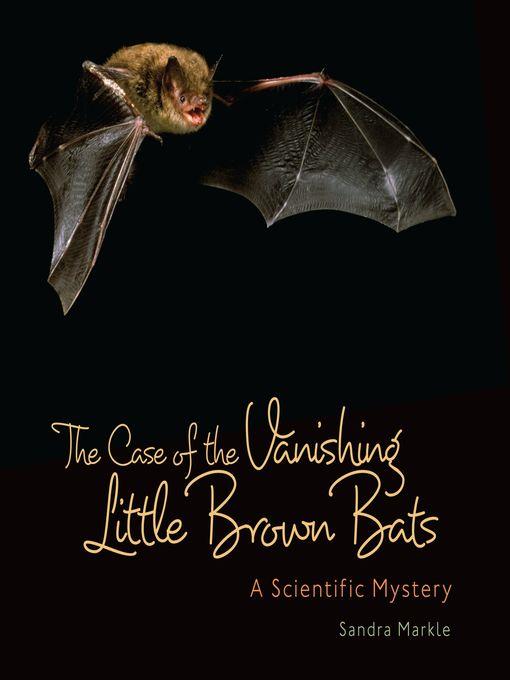
The Case of the Vanishing Little Brown Bats
A Scientific Mystery
فرمت کتاب
ebook
تاریخ انتشار
2014
Lexile Score
1030
Reading Level
5
ATOS
6.3
Interest Level
4-8(MG)
نویسنده
Sandra Markleشابک
9781467747653
کتاب های مرتبط
- اطلاعات
- نقد و بررسی
- دیدگاه کاربران
نقد و بررسی

Starred review from July 1, 2014
Gr 4-6-This informative title sheds light on a mystery of nature: how little brown bats, nature's insect eaters, are mysteriously dying in their caves during hibernation. Each chapter takes readers into the problems that plague this endangered member of our ecosystem, describing how teams of scientists examined how "white-nose syndrome," caused by a fungus called Pd, is infecting the brown bat population. Scientists have searched different caves and mines in the eastern United States and discovered that Pd affects bats by damaging their wings. Since this discovery, they have been exploring ways to change the conditions so that these small mammals can survive hibernation. The text is written in a clear tone, providing information on the plight of the bats in an accessible style. The book integrates textual and visual information well, and strong back matter allows students to do additional research. An excellent work that will enlighten readers about a growing problem in the natural world.-Melissa Smith, Royal Oak Public Library, MI
Copyright 2014 School Library Journal, LLC Used with permission.

July 15, 2014
Since 2007, with the first reports of hibernating bats dying in large numbers, scientists have worked from various angles to find the cause and cure, racing against the possibility of extinction.As she did for golden frogs and honeybees (The Case of the Vanishing..., 2011, 2013), veteran science educator Markle presents this disturbing disappearance as a mystery. She describes the search for clues in the bats' physical environments, lifestyles and internal organs. Scientists descend into caves and mines to measure temperature and humidity. They use sophisticated lab tools to measure pesticide residues, culture fungi, search for viruses and compare DNA. Finding the cause, a fungus now called Pseudogymnoascus destructans, was not enough. How does Pd work to harm the bats? Where did it come from? Why are European bats relatively resistant? And what can researchers do to combat it or increase the resistance of our native North American bats? With plentiful details about the scientific work, photographs showing scientists and their tiny subjects, clear explanations, and an organization that is both topical and chronological, this title brings science to life. The extensive backmatter includes further facts about these amazing creatures, ways readers can help them, and outside resources as well as useful sources for further information. The appealing design and presentation add value to this account of science in action. (glossary, index) (Nonfiction. 9-13)
COPYRIGHT(2014) Kirkus Reviews, ALL RIGHTS RESERVED.

October 15, 2014
Grades 3-6 As this latest title in Markle's A Scientific Mystery series reveals, little brown bats are in peril in North America. In 2007, researchers checked a cave in upstate New York for hibernating bats and discovered that few were hibernating, many were dead, and some had fuzzy white noses. Markle follows the scientists as they consider and discard theories about what was causing the white fuzz (Pesticides? A virus?) and whether it was killing the bats. In 2008, the culprit was identified as a fungus, Pseudogymnoascus destructans, or Pd, which thrives in cool environments. The clearly written text describes these common bats and communicates the urgency as well as the methods of scientists' mission to save them. Most of the color photos are quite good, and a few are truly excellent in their clarity, composition, and usefulness. A current map shows the gradual spread of Pd from New England into other parts of the U.S. and Canada. An informative book on a timely topic.(Reprinted with permission of Booklist, copyright 2014, American Library Association.)

























دیدگاه کاربران